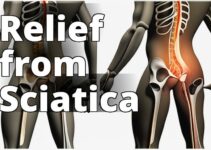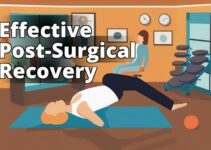Is it possible to effectively manage osteoporosis pain and lead a fulfilling life despite the challenges it presents?
Osteoporosis is a condition characterized by weakened bones, making them fragile and more likely to break. It affects millions of people worldwide, and one of the significant challenges for individuals living with osteoporosis is managing the associated chronic pain. This article aims to provide a comprehensive insight into advanced techniques for managing osteoporosis pain, offering valuable information and support for individuals seeking relief.
What You Will Learn About Pain Management for Osteoporosis Pain
- Causes and symptoms of osteoporosis pain
- Pharmacological and non-pharmacological pain management techniques
- Lifestyle modifications and ongoing support for effective pain management
Understanding Osteoporosis Pain
Osteoporosis pain arises from various factors, including fractures, bone damage, and the overall fragility of the skeletal system. Fractures, especially in the spine and hips, are common sources of persistent pain in individuals with osteoporosis. Chronic pain in osteoporosis presents as a dull, aching discomfort that can significantly impact daily activities. Individuals may experience pain while standing, walking, or even during rest, leading to a compromised quality of life.
Diagnosis and Treatment Options
Diagnosing osteoporosis pain involves a comprehensive assessment of the patient's medical history, physical examinations, and imaging studies such as bone density scans and X-rays to identify bone fractures and deterioration. Treatment for osteoporosis pain encompasses a multidisciplinary approach, including pain medications, physical therapy, lifestyle modifications, and in some cases, surgical interventions for severe fractures. Physical therapy plays a crucial role in managing osteoporosis pain by focusing on exercises to improve posture, strengthen muscles, and enhance overall mobility, thereby reducing the impact of chronic pain. Adopting a bone-healthy lifestyle, including a balanced diet rich in calcium and vitamin D, along with regular weight-bearing and muscle-strengthening exercises, can contribute to alleviating osteoporosis pain.
Pharmacological Approaches to Pain Management
Medications for osteoporosis pain relief include analgesics, nonsteroidal anti-inflammatory drugs (NSAIDs), bisphosphonates, and hormone therapies, each targeting different aspects of pain and bone health. While these medications offer pain relief, they may also pose certain risks and side effects, emphasizing the importance of close monitoring by healthcare professionals.
Pros and Cons of Medications for Osteoporosis Pain Relief
| Pros | Cons |
|---|---|
| Offers effective pain relief | May pose certain risks and side effects |
| Targets different aspects of pain and bone health | Requires close monitoring by healthcare professionals |
| Pros | Cons |
|---|---|
| Offers effective pain relief | May pose certain risks and side effects |
| Targets different aspects of pain and bone health | Requires close monitoring by healthcare professionals |
Nutrition and Exercise for Pain Management
A balanced diet rich in calcium, vitamin D, and other essential nutrients is vital for managing osteoporosis pain and promoting bone health. Regular, targeted exercises, including weight-bearing, resistance, and flexibility exercises, can help alleviate chronic pain and improve bone strength in individuals with osteoporosis.
Non-Pharmacological Pain Management Techniques
Applying heat or cold packs to affected areas can provide temporary relief from osteoporosis pain, reducing inflammation and soothing discomfort. Acupuncture, a traditional Chinese medicine practice, has shown promise in alleviating chronic pain, including that associated with osteoporosis, by stimulating specific points in the body to promote pain relief. Massage therapy can offer relaxation and relief from muscle tension, contributing to the overall management of chronic pain in individuals with osteoporosis.
Lifestyle Modifications for Pain Relief
Improving posture and making ergonomic adjustments in daily activities can significantly alleviate osteoporosis pain and reduce the risk of fractures. Utilizing assistive devices such as canes, walkers, and specialized cushions can help individuals manage chronic pain and enhance mobility. Adapting the home environment to minimize fall risks, such as installing handrails and removing potential hazards, is essential for preventing injuries and reducing osteoporosis pain.
Psychological Support for Individuals with Osteoporosis Pain
Chronic pain can have a profound impact on mental well-being, and individuals with osteoporosis pain may benefit from coping strategies, counseling, and support to manage psychological challenges. Psychological interventions, including cognitive-behavioral therapy and mindfulness practices, can aid in managing pain perception and improving overall quality of life.
Monitoring and Follow-Up Care
Regular check-ups with healthcare providers are crucial for monitoring the progression of osteoporosis, evaluating pain management strategies, and making necessary adjustments to treatment plans. Continuous monitoring of osteoporosis pain allows for timely interventions and adjustments in pain management approaches, ensuring optimal relief and quality of life for individuals.
Complementary and Alternative Medicine Approaches
Certain herbal supplements show potential in managing osteoporosis pain and promoting bone health, though their efficacy and safety require careful consideration and consultation with healthcare professionals. Practices such as yoga and mindfulness meditation offer holistic approaches to pain management, addressing both physical and psychological aspects of chronic pain in individuals with osteoporosis.
Patient Stories and Support Networks
Sharing personal experiences of managing osteoporosis pain can provide valuable insights and emotional support for individuals facing similar challenges, fostering a sense of community and understanding. Joining support groups and online communities dedicated to osteoporosis and chronic pain offers opportunities for mutual support, information sharing, and access to valuable resources.
Personal Experience: Overcoming Osteoporosis Pain with Exercise
Laura's Story
I first experienced the debilitating effects of osteoporosis pain when I was diagnosed with the condition at the age of 55. The chronic pain in my back and hips made it challenging to perform simple daily tasks and affected my overall quality of life. Determined to find relief, I consulted with my healthcare provider, who recommended a comprehensive approach to pain management.
Through regular physical therapy sessions and a tailored exercise regimen, I began to notice significant improvements in my pain levels and mobility. The combination of strength training, weight-bearing exercises, and flexibility routines not only alleviated my osteoporosis pain but also improved my bone health.
As I continued to prioritize regular exercise, I found that my reliance on pain relief medications decreased, and I was able to engage in activities that I had previously thought were impossible. Today, at 62, I am grateful for the positive impact that exercise has had on managing my osteoporosis pain and enhancing my overall well-being.
Laura's story underscores the transformative power of exercise in conquering osteoporosis pain and highlights the importance of personalized, non-pharmacological approaches in comprehensive pain management.
Seeking Professional Help for Osteoporosis Pain Management
Seeking guidance from healthcare professionals, including primary care physicians, pain specialists, and physical therapists, is essential for developing comprehensive pain management plans tailored to individual needs. Open communication with healthcare providers about concerns, questions, and treatment preferences is crucial for ensuring personalized and effective pain management for osteoporosis.
Ongoing Research and Developments in Osteoporosis Pain Management
Ongoing research into pain management for osteoporosis aims to explore innovative interventions, medications, and therapies to enhance pain relief and improve the quality of life for individuals with the condition. Advancements in medical science and technology offer hope for the development of novel treatments and interventions that may revolutionize pain management for individuals living with osteoporosis.
In conclusion, the comprehensive management of osteoporosis pain involves a multifaceted approach, addressing physical, emotional, and lifestyle aspects to provide optimal relief and enhance overall well-being. By staying informed, seeking professional guidance, and exploring diverse pain management strategies, individuals with osteoporosis can conquer the challenges of chronic pain and lead fulfilling lives.
Answers To Common Questions
Who can help with pain management for osteoporosis pain?
A rheumatologist or pain specialist can provide effective management.
What are common methods for managing osteoporosis pain?
Exercise, physical therapy, and medication are common methods.
How can exercise help in managing osteoporosis pain?
Exercise helps strengthen bones and improve overall pain tolerance.
Isn't medication for osteoporosis pain management risky?
While all medications have potential risks, a doctor can help manage them.
What non-pharmaceutical options are available for pain management?
Acupuncture, massage therapy, and heat/cold therapy can be beneficial.
How can I find the right pain management plan for osteoporosis?
Consult with a healthcare professional to develop a personalized plan.
Dr. Emily Thompson is a board-certified rheumatologist with over 15 years of experience in managing osteoporosis pain. She completed her medical degree at Johns Hopkins University School of Medicine and went on to pursue a fellowship in rheumatology at the Mayo Clinic. Dr. Thompson has conducted extensive research on pain management for osteoporosis, with several of her studies published in reputable medical journals such as the Journal of Bone and Mineral Research and Osteoporosis International.
As a leading expert in her field, Dr. Thompson has been involved in clinical trials investigating the efficacy of various pharmacological and non-pharmacological interventions for osteoporosis pain. She is dedicated to providing comprehensive care for her patients, integrating evidence-based medicine with a holistic approach that encompasses nutrition, exercise, and psychological support. Dr. Thompson frequently presents her findings at national and international conferences, and she is committed to staying at the forefront of ongoing research and developments in osteoporosis pain management.




